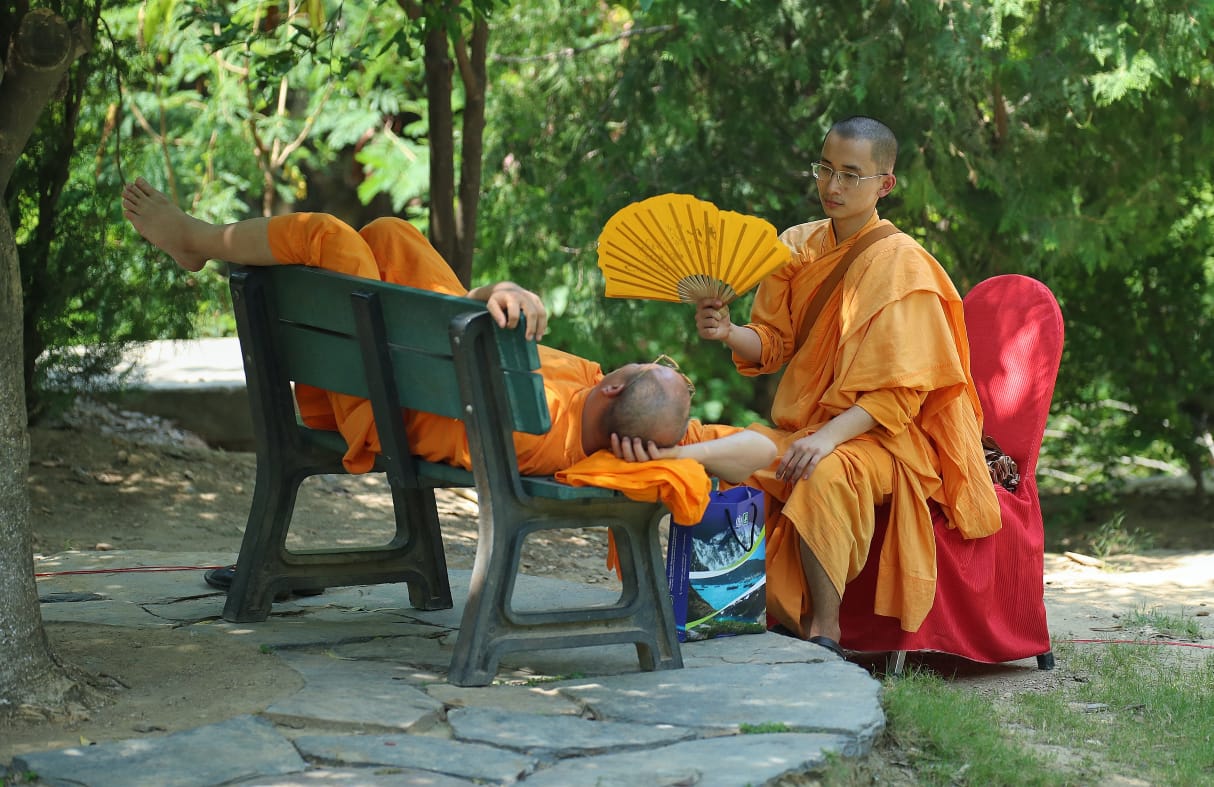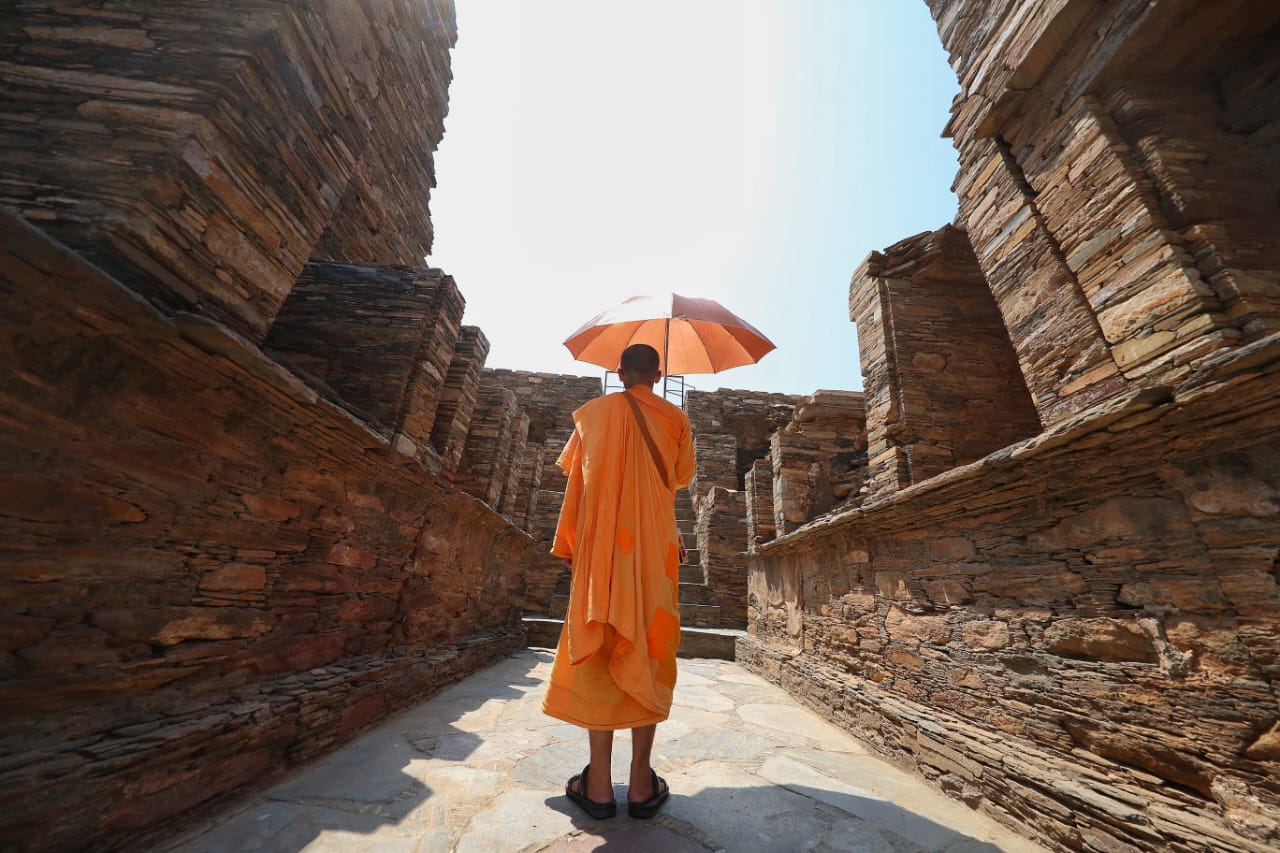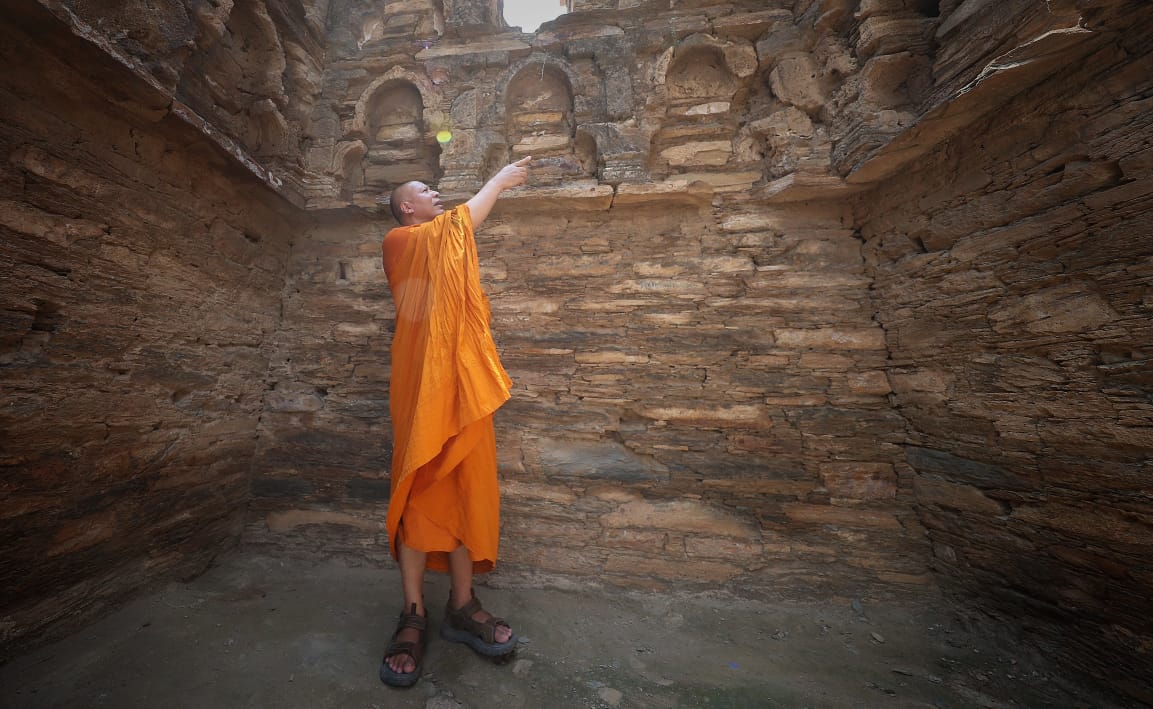Buddhist Monks Visit Takht Bhai, Peshawar Museum
Shazia Mehboob
Islamabad: A 31-member delegation of Buddhist monks visited the UNESCO world heritage site of Takht Bhai in Mardan district and the colonial-era Peshawar Museum on Thursday. They were greatly moved by its history, Buddhist monasteries, artefacts, ancient sites, and Gandhara art.
The members of the delegation came from South Korea, Japan, Thailand, Sri Lanka, Myanmar, Cambodia, and Nepal.Directorate of Archaeology and Museums Peshawar Director Abdul Samad Khan briefed the delegation about the historical significance of the world heritage sites of Takht Bhai and nearby Seri Bahlool which were attracting tourists from across the globe.
The delegation took keen interest in the ruins of the monastic complexes of Takht Bhai that are spectacularly positioned on various hilltops ranging from 36.6 metres to 152.4 metres in height, with a covered area of about 33 hectares.
The delegation was informed that Takht Bhai monastery was in continuous use until the 7th century CE and was composed of an assemblage of buildings constructed of stone on Gandhara patterns in diaper style using local dressed and semi-dressed stone blocks set in a lime and mud mortar.

The neighbouring City remains at Sahr-i-Bahlol, located five kilometres from Takht Bhai’s monastery, and is a small ancient fortified town of the Kushan period. It was constructed on an elongated mound of nine metres in height on 9.7 hectares, surrounded by portions of a defensive wall in diaper style that dates back to the first two or three centuries BC.

The boundaries of Sahr-i-Bahlol are well defined, with parts of the fortification walls still intact. Both of these historical sites had been declared protected monuments under the Ancient Preservation Act (1904) of the colonial era and the Antiquity Act (1975) of the Government of Pakistan. The Khyber-Pakhtunkhwa (KP) government has declared the entire mountain area of 445 hectares an ‘Archaeological Reserve’ to control urbanisation at Sahr-I-Bahlol. Later, the delegation visited Peshawar Museum, the lone Ghandhara Art Museum in the world, and visited its different sections and galleries.
Abdul Samad informed that Peshawar Museum is the only Ghandhara art Museum where over 40,000 rare artefacts, antiquities, and the complete life story of Lord Bhuddha were preserved.

It is the only Museum in the world where the complete life story of the Founder of Buddhism, Lord Bhudda, is preserved in the form of panels and statues. The main hall of the Peshawar Museum was constructed in 1906 in memory of Queen Victoria. There is a Buddha Gallery with statues of Lord Bhudda and a Buddha Savatta Gallery with the princely life of Lord Bhudda. Minister of State Ramash Kumar Vankwani stated that Pakistan is home to numerous religious tourist destinations, such as Takht Bhai and the Peshawar Museum, which draw hundreds of thousands of visitors from throughout the nation.
Ramash Kumar further said that roughly 8 percent of the Ghandhara sites still existed in KP and that, if properly promoted, they might attract significant international investment. In addition to boosting the economy, visa requirements for visitors from other countries were being loosened, he added.
The monks thanked the government for maintaining Ghandhara and other historic monuments in KP and argued that tourism should be viewed objectively, regardless of one’s religious beliefs.
Photo Credit: Dr Abdul Samad
Dr Jamal Advocates for National Heritage Status for Sujan Singh Haveli

Comments are closed.